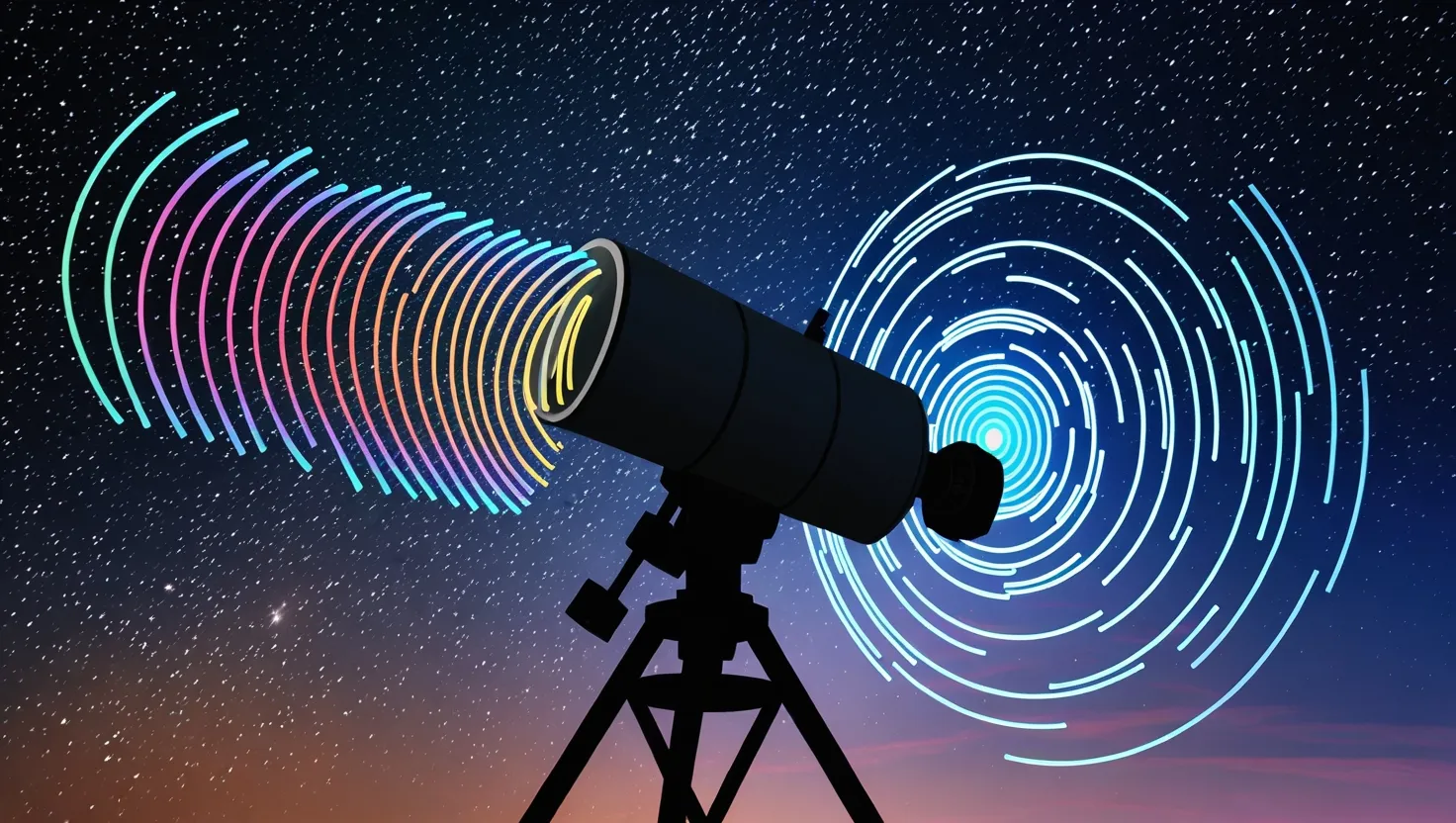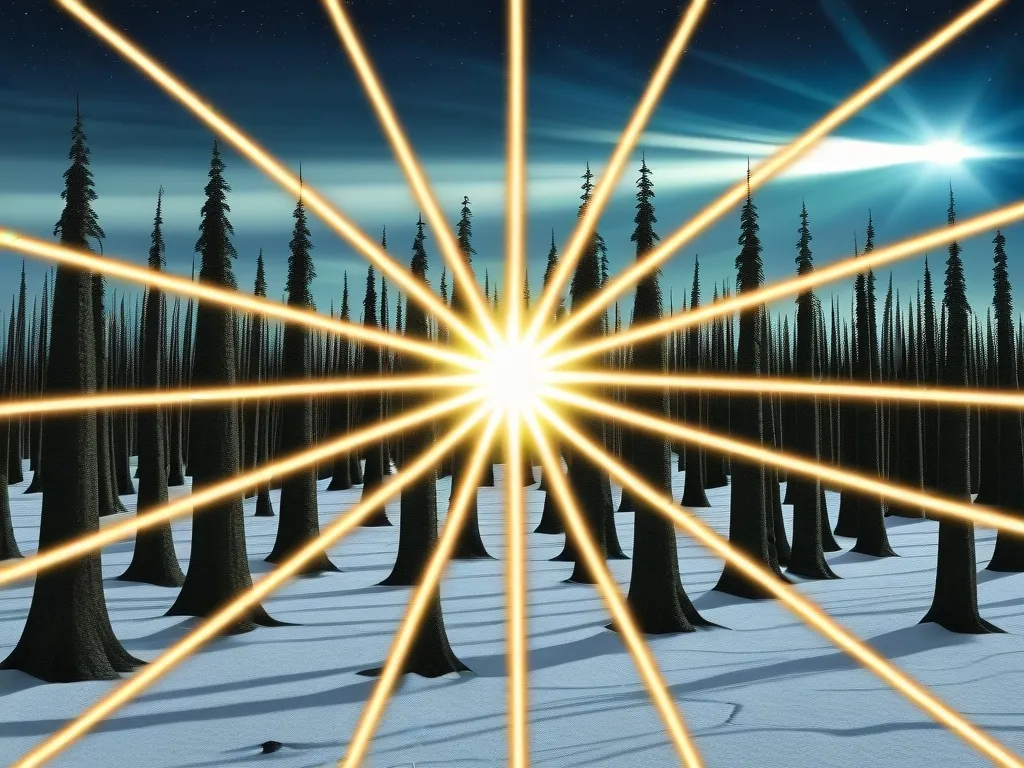The cosmos whispers to us in radio waves, and sometimes those whispers become shouts that leave us scratching our heads. For decades, astronomers have been picking up strange signals from the depths of space that defy easy explanation. These cosmic broadcasts have sparked imaginations, fueled scientific debates, and pushed the boundaries of our understanding of the universe.
Let’s dive into nine of the most perplexing radio signals that have kept astronomers up at night.
Remember the summer of ‘77? While most folks were grooving to disco, astronomer Jerry Ehman was about to make history. On August 15, a powerful narrowband radio signal blasted through the Big Ear radio telescope at Ohio State University. It lasted for 72 seconds and was so striking that Ehman circled the printout and wrote “Wow!” next to it. Thus, the Wow! Signal was born.
What made this signal so special? Its frequency matched what scientists predicted an alien civilization might use to communicate - right around 1420 MHz, the emission frequency of hydrogen. It was also incredibly strong and appeared to come from the direction of Sagittarius. Despite decades of searching, we’ve never heard it again.
Was it a message from E.T.? A reflection off space debris? Or something even stranger? The debate rages on.
“The most exciting phrase to hear in science, the one that heralds new discoveries, is not ‘Eureka!’ but ‘That’s funny…‘” - Isaac Asimov
Fast forward to 2007, and we encounter the cosmic equivalent of a strobe light - Fast Radio Bursts (FRBs). These intense flashes of radio waves last only milliseconds but pack a punch, releasing as much energy as the Sun does in decades. What’s really weird is that some of them repeat in patterns.
FRB 121102, discovered in 2012, is particularly mischievous. It fires off bursts in a seemingly random pattern, then goes quiet for months before starting up again. In 2020, astronomers found it following a 157-day cycle. What cosmic DJ is spinning these rhythms?
Theories range from colliding neutron stars to alien megastructures. But the truth is, we’re still in the dark. FRBs are rewriting our understanding of high-energy astrophysics, and each new discovery brings more questions than answers.
Have you ever wondered what it would be like to intercept an alien satellite transmission? Some believe we already have. Enter the Black Knight Satellite, a mysterious object that’s been orbiting Earth for… well, nobody knows how long.
In 1899, Nikola Tesla claimed to have received signals from space. In the 1920s, amateur radio operators picked up strange echoes. And in 1954, newspapers reported on a “satellite” orbiting Earth - years before Sputnik 1. Conspiracy theorists have linked these events to the Black Knight, a supposed 13,000-year-old alien satellite.
NASA says it’s space junk, but the legend persists. The signals attributed to the Black Knight remain unexplained, a tantalizing hint of cosmic mysteries just beyond our grasp.
“Two possibilities exist: either we are alone in the Universe or we are not. Both are equally terrifying.” - Arthur C. Clarke
Speaking of stars behaving badly, let’s talk about KIC 8462852, better known as Tabby’s Star. This F-type main-sequence star sits about 1,470 light-years away in the constellation Cygnus. It first caught astronomers’ attention in 2015 when it was observed dimming in bizarre, irregular patterns.
But it’s not just the light show that’s puzzling. In 2016, the star was caught emitting strange radio waves. The combination of unusual dimming and radio emissions has led to some wild theories, including the idea that we’re seeing the effects of an alien megastructure.
More likely explanations include a swarm of comets or interstellar dust. But Tabby’s Star continues to surprise us, reminding us how little we truly know about the cosmos.
Now, let’s take a trip to the ringed jewel of our solar system. Saturn’s north pole is home to a massive hexagonal storm, a feature unique in our planetary neighborhood. But in 2004, the Cassini spacecraft picked up something even stranger - radio emissions from the hexagon that didn’t match any known natural phenomenon.
These signals, dubbed Saturn Kilometric Radiation (SKR), fluctuate in a way that seems to be tied to the planet’s rotation. But here’s the kicker - the hexagon’s rotation period doesn’t match Saturn’s known rotation period. It’s as if the storm is marching to the beat of its own cosmic drum.
Could these anomalous broadcasts be telling us something about Saturn’s internal structure? Or are they evidence of something more exotic? The hexagon remains one of the solar system’s most beautiful and baffling mysteries.
“We are just an advanced breed of monkeys on a minor planet of a very average star. But we can understand the Universe. That makes us something very special.” - Stephen Hawking
Have you ever tuned into a numbers station? These shortwave radio stations broadcast encoded messages, often used by intelligence agencies. But one station, UVB-76 (nicknamed “The Buzzer”), has been puzzling listeners since the 1970s.
Here’s where it gets weird. In 2010, astronomers noticed correlations between The Buzzer’s transmissions and certain deep space radio signals. Some of the patterns matched those seen in FRBs and other unexplained cosmic broadcasts.
Is it just coincidence? Or could there be some connection between these Earth-bound transmissions and the signals we’re receiving from the cosmos? It’s a long shot, but in the world of mysterious radio signals, nothing is off the table.
In 2007, astronomers stumbled upon a radio burst so powerful it rewrote the books on what we thought possible. The Lorimer Burst, named after its discoverer Duncan Lorimer, lasted just 5 milliseconds but released as much energy as the Sun does in a month.
What could produce such an enormous burst of energy? The leading theory is that it was caused by two neutron stars colliding. But some scientists argue that even this cataclysmic event doesn’t quite explain the burst’s intensity.
The Lorimer Burst opened up a whole new field of astronomy and led to the discovery of FRBs. It’s a reminder that the universe is capable of things far beyond our current understanding.
“The universe is not only stranger than we imagine, it is stranger than we can imagine.” - Sir Arthur Eddington
In 1997, the SETI Institute thought they might have hit the jackpot. During a routine scan of the sky, they picked up a signal that met all the criteria for a potential alien transmission. It was narrowband, appeared to be coming from a fixed point in space, and wasn’t associated with any known cosmic phenomenon.
For a brief, exciting moment, it seemed like we might have made first contact. But further investigation revealed a more mundane explanation - it was likely interference from a passing satellite.
While “Candidate 1” turned out to be a false alarm, it helped refine SETI’s detection methods and reminded us of the challenges involved in distinguishing artificial signals from the cosmic background noise.
Sometimes, the most perplexing mysteries have the most mundane solutions. In 2015, astronomers at Australia’s Parkes Observatory were puzzled by a series of strange radio bursts. These signals, dubbed “perytons,” had been detected sporadically since 1998 and were thought to have a cosmic origin.
After years of head-scratching, the culprit was finally unmasked - it was the observatory’s microwave oven. When staff members opened the door before the heating cycle was complete, it created a brief burst of radio waves that the telescope picked up.
While it might seem like a letdown, this discovery actually highlights the incredible sensitivity of our radio telescopes. If we can pick up a microwave oven’s emissions, imagine what else we might be able to detect out there in the vastness of space.
As we continue to scan the skies, who knows what other signals we might intercept? The universe is vast, and our technology is constantly improving. Each unexplained radio signal brings us one step closer to understanding the cosmic symphony that surrounds us.
What do you think? Are these signals evidence of alien life, or are they just reminders of how much we have yet to learn about the universe? The next time you look up at the night sky, remember - it might be looking back, and it might be trying to tell us something.
“The important thing is not to stop questioning. Curiosity has its own reason for existing.” - Albert Einstein






